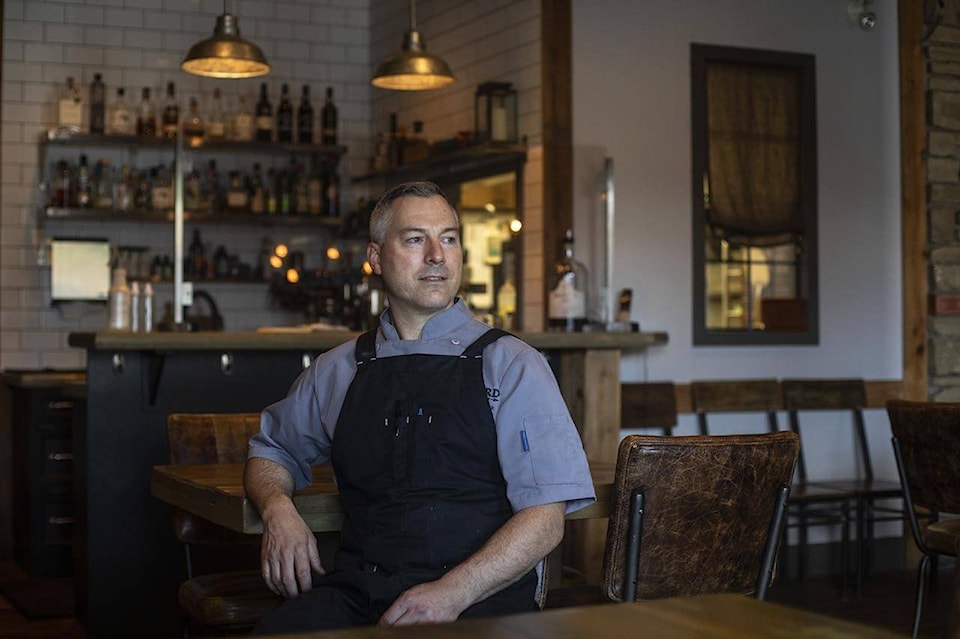Restaurants across the country have been grappling with rising food prices since the start of the COVID-19 pandemic, but for Blair Lebsack, some of the most shocking increases have been for his restaurant’s less flashy ingredients.
Before the pandemic, a 16-litre container of canola oil for his Edmonton restaurant RGE RD would cost $18, he said. Now they go for anywhere between $29 to $32 for the same amount.
“It adds up really quickly,” Lebsack said in an interview.
High shipping rates, delays and increases in grain costs have sent food prices soaring for restaurants already hurt by pandemic restrictions and closures.
Restaurants Canada’s James Rilett said restaurants are a low margin industry, so there’s not a lot of room to work in additional costs.
“It’s pretty bad. We won’t have an idea of how bad until most provinces get reopened,” Rilett said.
A survey by Restaurants Canada found food costs are one of the top three challenges restaurants are facing along with additional shutdowns and pandemic-related debt.
Rilett, Central Canada vice-president at Restaurants Canada, said while most restaurant owners will try to delay menu increases for as long as possible, he expects customers will face higher prices.
The pandemic’s effects on food prices have been far-reaching, impacting the entire supply chain, according to Canada’s Food Price Report.
“I think last year when the pandemic hit, the food industry was somewhat protecting the consumer. Prices did go up last year but (the industry) did absorb some of the shock created by the pandemic,” said Sylvain Charlebois, lead author of the report and director of the Agri-Food Analytics Lab at Dalhousie University.
However, the food price report predicts there’ll be a five per cent increase in prices this year, up from a three per cent increase in 2020, he added.
“Some people may say ‘Well, it’s five per cent, what’s the big deal?’” he said. “But five per cent is quite significant because food inflation is not a game of averages.”
According to monthly average retail price data from Statistics Canada, between January 2020 to May 2021, the average price of a kilogram prime rib roast went up almost 12 per cent. The price of 200 grams of instant coffee rose nearly 15 per cent.
Charlebois also noted that shipping costs have had a significant impact on Canada’s food prices and have tripled in the last year. And like Rilett, he expects restaurants will raise their prices to make up for the increased costs and may even make cuts to their menus to reduce the amount spent on food.
Menu changes have been Lebsack’s approach so far.
RGE RD has been open for indoor dining for just over a week and while his regulars have noticed the higher costs, he said they’ve also been understanding.
“We have really good dialogue with our customers,” Lebsack said.
Lee Cooper, chef and owner of L’Abattoir in Vancouver, said he’s also feeling the squeeze of increased costs.
The upscale eatery, however has a clientele that is used to spending a bit more on their dining experiences, Cooper added, which has helped the transition to changes in the menu.
“Our restaurant is not super cheap and we try our best to offer a premium product so I think our guests come in ready to spend a little bit more,” Cooper said.
One way for restaurants to lessen the blow of higher costs has been to get supplies from local sources.
Lebsack said he has about two years worth of animals being bred for RGE RD by local farms which are helping the restaurant avoid industrial farming prices.
“The closer we can work with our food and our neighbours, our community, the tighter we can keep our costs.” Lebsack said.
And the saving grace for the country’s restaurants may be the pent-up demand as diners head out for the first time after months of cooking at home and takeout meals.
Lebsack said he’s already seeing his customers excited to get back to the brick-and-mortar dining experience.
“The only really good thing coming out of this is how much people have missed restaurants,” Lebsack said.
“I think once people digest that everything has gone up in price, I think they’ll be coming back out again and making it worthwhile for us to be in business.”
READ MORE: A look at COVID-19 reopening plans across the country
———
This story was produced with the financial assistance of the Facebook and Canadian Press News Fellowship.
Danielle Edwards, The Canadian Press
Like us on Facebook and follow us on Twitter.
